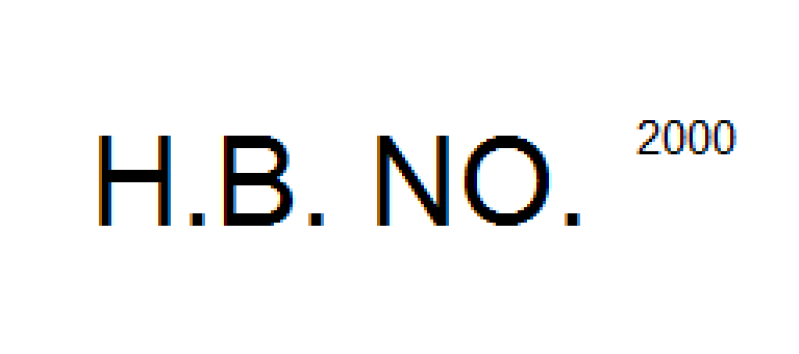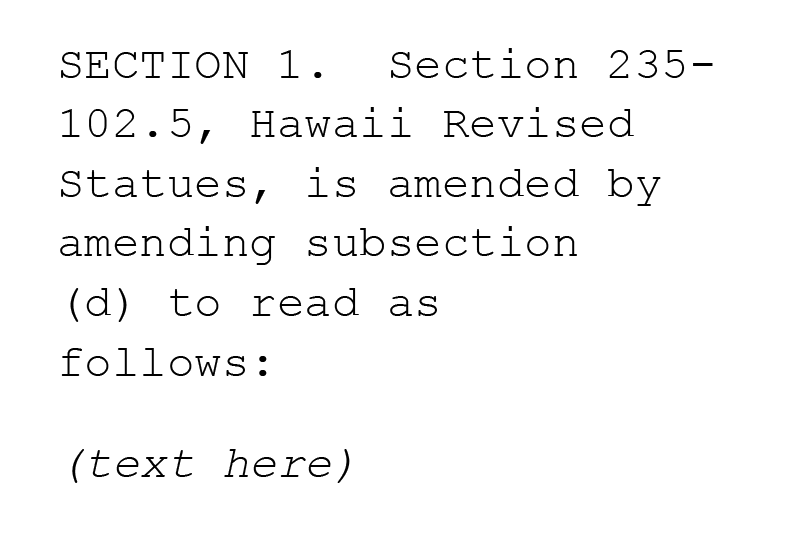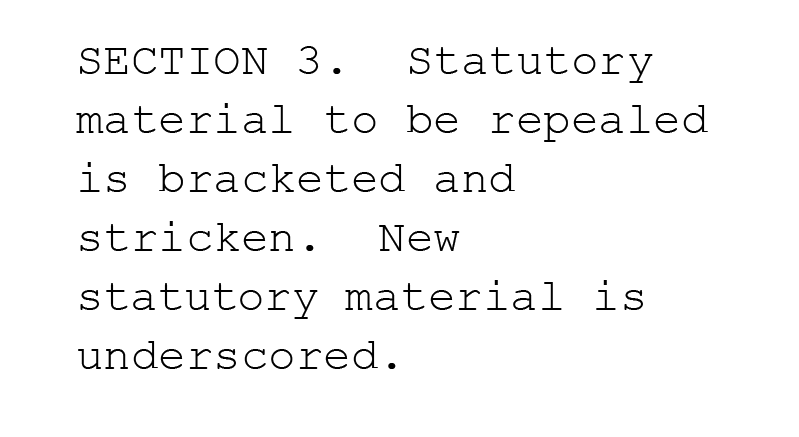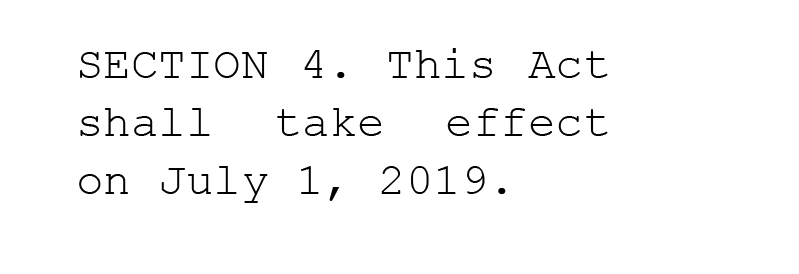Anatomy of a Bill
Here are a few fundamentals on what makes up a bill.
(Download a .pdf of this page.)

Bill Number
The designation of a bill is abbreviated by either “HB” for House Bill or “SB” for Senate Bill, depending on where it was introduced. The Clerk’s office of the chamber of origin then assigns a bill number to each bill introduced, usually in the order in which it was received. The HB or SB designation, and the bill number assigned, remains unchanged during the bill’s path through the legislature. If the bill itself is revised, that’s noted by a new draft number (e.g., H.D.1, S.D. 2, etc.)

Title
“A Bill For An Act Relating To Income Tax” … The “bill for an act” phrase means that if the bill passes the Legislature and becomes law, it becomes an “act” of law and receives an “act number.” In fact, the Constitution of the State of Hawaii specifies that every law enacted must be introduced in the Legislature in the form of a bill (Article III, Section 14). The title of the bill must encompass the entire subject matter contained in the bill and is not changed or amended as the bill moves forward. The title is often intentionally broad to allow leeway for changes in the bill’s content during the course of the session.

Sections
Bills are divided into sections. The first section may be a purpose section, which states the purpose of the bill and may describe the situation or problem that gives rise to the measure or describe the need for and intent of the legislation. Sections may specify the action mandated by the legislation, including clear instructions for changes to the Hawaii Revised Statutes, our State’s codified law. They may also provide definitions of terms, provide remedies and penalties, and specify how long the legislation will be in effect. Some bills will contain a “severability clause,” which instructs the court that if one section of the act is found unconstitutional, the remainder of the act will remain intact, or a “savings clause,” which states that the bill is not retroactive.

Second to the Last Section
If the bill provides for changes in statutory or constitutional material, the second to the last section typically will be the Ramseyer provision. This section explains that in the previous sections of the bill, all statutory material that is to be added is underscored, and all statutory material that is to be repealed is bracketed and stricken [like this]. (This ensures that if the bill is enacted there will be no confusion as to how the Hawaii Revised Statutes or State Constitution is amended.)

Last Section
The last section of the bill will provide the effective date – i.e., the date the law will take effect. This may be a specific date or may read, “This Act shall take effect upon its approval.” In some cases, more than one effective date may be provided – for example, the act will take effect on one date, provided that section 3 will take effect on another date. (Sometimes during session, bills are amended to have far-in-the-future effective dates, such as 2050. While not invalid if enacted, such “defective dates” are inserted to ensure further discussion. Typically, such changes ensure the bill will have to go to conference committee if successful.)